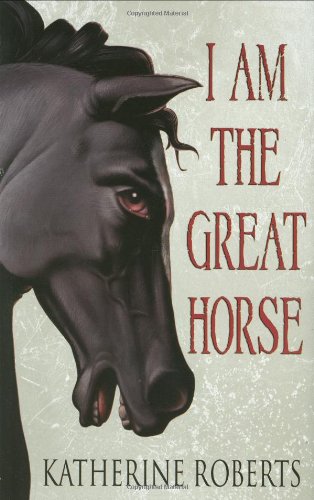I Am the Great Horse
This is the story of Alexander the Great as told by his warhorse, Bucephalus. It is also the story of Bucephalus’s devoted groom Charmides – or Charm when she is pretending to be a boy – and the special bond between them.
Although told in the first person by Bucephalus, the author keeps humanisation down to a very minimum and much of the narrative is taken up with things which really matter to a horse, such as a stallion dominating other horses and his feelings for his mares. And Bucephalus describes what he sees without giving any analytical explanations. After each battle there is a list of the numbers of horses and people killed or enslaved but there is no attempt to answer the questions which most readers would inevitably ask as to what was all this about. What was the reason for all this bloodshed?
The gentle Charm cannot answer these questions either, but she is quietly shocked by all the cruelty and carnage. She also fears for the safety of her beloved charge and on several occasions tries to prevent him being sent into battle – on one occasion with disastrous results.
The characters of Charm and Bucephalus are very sympathetically drawn, but it is a different matter with Alexander. He comes across as a perfect monster. Massacring prisoners, torturing them, having their hands cut off, and sometimes even crucifying them. Enslaving whole populations of towns and then having the buildings razed to the ground.
The author knows both her history and also all about horses. (She worked for ten years as a groom in a racing stable.) This book has been very carefully researched and there is a comprehensive bibliography. There is also a historical note and a map of Alexander’s campaigns.
The novel clearly illustrates the cruelty of the age and shows that while Bucephalus was certainly a great horse, Alexander himself does not deserve his title of ‘great.’ Young adult.










